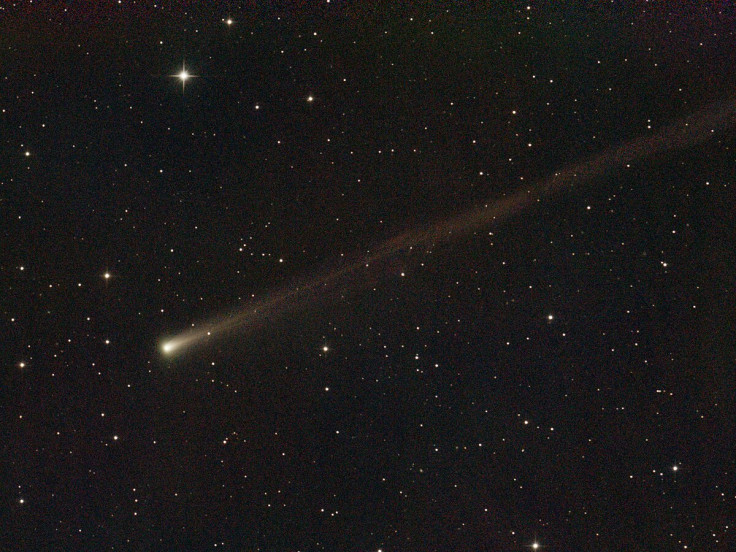3I/ATLAS Update: Avi Loeb Claims Michio Kaku 'Trying To Be Liked,' Wrote 'No Scientific Papers'
Avi Loeb slams Michio Kaku over 3I/ATLAS 'alien' claims: 'He's trying to be liked'. Get the full story on the feud and the missing NASA data.

When an interstellar object tumbles through our cosmic neighbourhood, it's bound to cause a stir. But the object known as 3I/ATLAS has done more than that; it has ignited a fierce debate between some of physics' most public figures.
At the heart of the controversy is Harvard astrophysicist Avi Loeb, who famously made similar claims about the first known interstellar object, 'Oumuamua. He has speculated that 3I/ATLAS could be an alien probe.
This extraordinary claim was met with scepticism from physicist Michio Kaku. Kaku, a renowned theoretical physicist and science populariser, In a recent interview, offered a more grounded take, stating that until proven otherwise, 'there are no aliens jumping out of a Hollywood set and hence, no threat to the earthlings.'
In his own recent interview, Professor Loeb took a direct swipe at Kaku's critique. He bluntly quipped, 'Well, again, he didn't write a single scientific paper on this subject. He's also a commentator and he's again trying to be liked and popularize science.'

The Great 3I/ATLAS Debate: Populariser vs. Practitioner
Professor Loeb elaborated on his position, emphasising the scientific calculations his team performed regarding the anomalous nature of 3I/ATLAS. He specifically pointed to the 'anomalous ejection as witnessed on the interstellar object' as a key piece of data. He argues that his speculations are based on data, unlike Kaku's commentary.
'It's not as if he's saying that based on any calculation,' Loeb said. 'I wrote a paper with a student of mine where we said suppose it's a natural object and we were to integrate the trajectory back in time where what kind of stars it should have originated from and of course we found that it should have arrived because it was moving when it entered the solar system was moving at 60 kilometers per second. That's a high speed.'
He continued, 'We found that it should have arrived from the population of old stars in the Milky Way disk because those stars were kicked around for a longer time so they have a higher characteristic speed relative to the sun and then so indeed it should be an old object if it's natural.'

Unpacking the Anomalies of 3I/ATLAS
Loeb's main scientific counterpoint, however, involves a 'big caveat' that he claims Kaku fails to recognise. The entire assumption that 3I/ATLAS came from an old star rests on the idea that it 'inherited the velocity of the star.'
Loeb argues this might be a false assumption. 'In principle, it could have had an ejection speed from the planetary system around the star,' he explained.
'So if the ejection speed is large the star may have a small velocity and it's just the ejection speed that was large bringing it to the speed that we observed so even saying that the speed indicates an older population of stars has a big caveat to it and that is this assertion ignores the ejection speed being potentially large relative to the speed of the parent star to start with.'
In short, Loeb points out two flaws in the 'natural origin' argument: 'neglecting the ejection speed in the calculation and secondly assuming that it's a natural object.' If 3I/ATLAS is technological, he noted, 'the speed would have been related to the propulsion system.'
Is NASA Withholding 3I/ATLAS Data?
Beyond his scientific disagreements, Professor Loeb also voiced frustration with NASA over unreleased data on 3I/ATLAS. He had previously requested the data, which he believes is crucial for understanding the object.
'Oh yeah they haven't released it and I don't believe that they're doing it on purpose', Loeb stated. 'I think it's just some bureaucratic rule that they have not to release it until the government shutdown ends and it's really unfortunate because we don't want the politics of the day to suppress progress in science.'
He stressed the importance of the data. 'This is the highest resolution image we have in terms of it having 30 kilometers per pixel so it's three times better than the Hubble image.'
Loeb also made a cheeky aside about NASA's priorities, noting how the agency's interim administrator found time for celebrities but not for scientists.
'But I should say the acting director of NASA Sean Duffy responded to a tweet by Kim Kardashian, and that was at the same time that I approached the team and also a representative Ana Paulina Luna wrote a letter to Duffy asking for this data to be released so we didn't I didn't get a response.'

Amid the growing criticism of his work, Professor Loeb iterated that science should be given significance over petty politics.
The debate over 3I/ATLAS highlights a sharp divide in the scientific community—not just about the possibility of alien technology, but about how science itself should be communicated.
Is it better to stay grounded, as Michio Kaku suggests, and wait for 'Hollywood' proof? Or should scientists, as Avi Loeb argues, follow the data into uncomfortable territory, even if it means challenging the consensus?
As this interstellar object fades from view, the controversy it ignited only grows, fuelled by speculation and hampered by the frustrating wait for NASA's high-resolution data.
© Copyright IBTimes 2025. All rights reserved.




















